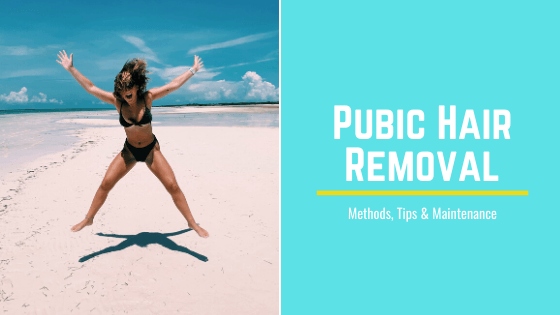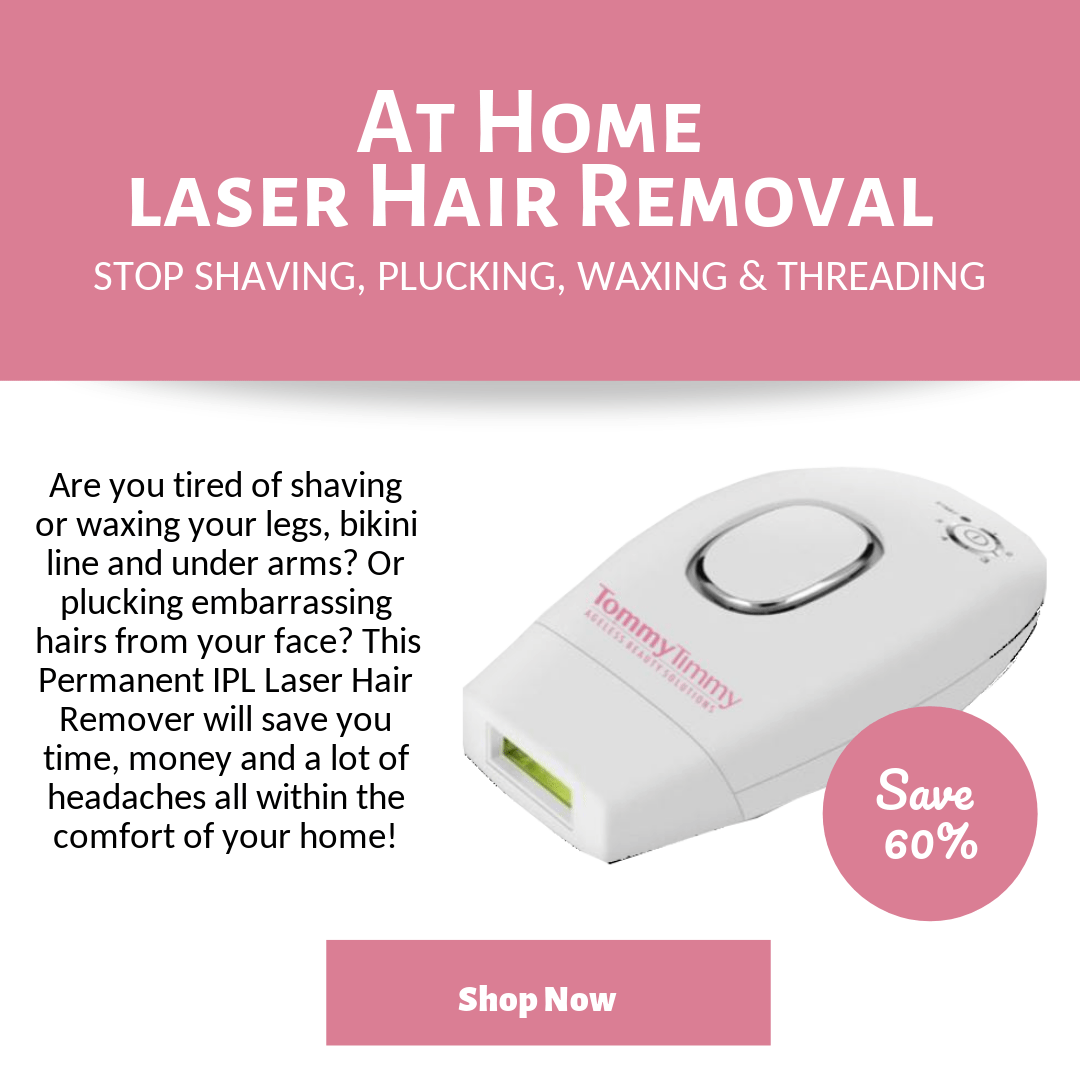Removing hair from anywhere on the body needs care and attention, but this is especially true in the delicate pubic region. It is vital that you not only take care when removing the hair but also protect and soothe the skin before and after doing so. In this article, we are going to be looking at how to successfully perform pubic hair removal and maintain the area in between hair removals.
Method For Removing Pubic Hair
When removing your pubic hair, you first need to decide on the method you are going to use. There are a variety of ways in which hair can be removed, and it is mostly down to personal preference and the sensitivity of your skin. For example, some find that shaving causes an itchy, irritating rash while others opt for this method over all others. If you are new to pubic hair removal, it may be best to test a few different approaches to find the right one for you.
Some of the most popular methods include:
- Shave the public hair
- Waxing the bikini area
- Epilate pubic area
- Pubic hair removal cream
If you have sensitive skin, it is important to choose a method that will not irritate the skin. Most often, this will be pubic epilation, which is sadly the most painful.
Preparation For Eliminating Your Pubic Hair
After you have selected a method, it is vital to prepare your skin for hair removal. One of the most important things to remember when performing any type of hair removal is to exfoliate. This is a way of removing dead skin cells and will not only make your skin look bright and glowing but will also help in the prevention of ingrown hairs and other forms of irritation associated with pubic hair removal.
You can exfoliate using a body scrub, a massage sponge, or with a homemade exfoliating scrub. This should be done at least 24 hours before hair removal to avoid severe irritation.
You should also ensure that the skin is clean before removing the hair. One of the leading causes of infection after hair removal is an infection caused by bacteria getting into abrasions. These abrasions come from cuts or nicks made in the skin during the hair removal process, and if bacteria get inside, you can get a nasty infected lump.
If the hair is particularly long, you may decide to trim it first. This will make your chosen method much more comfortable and will take less time. You can use any scissors to trim the hair down, but hair or nail scissors will work best. When thinking about the hair, it is also worth considering how much of it you wish to remove. Are you going to take away the whole lot? Or would you prefer partial removal? There is no right or wrong, each person is different, and you should go with what feels best for you.
Tips For Shaving
Shaving is one of the most popular pubic hair removal methods, and that is because it is so quick and convenient. You can simply hop into the shower and be done minutes later. However, there are some downsides, such as fast hair regrowth and a high risk of itching or burning after shaving. This can be avoided by ensuring that the skin is kept exfoliated and moisturized. Good body lotion should be applied after shaving and at least once a day in between shaves to maximize the effects. Let’s look at some shaving tips.
Shave In The Same Direction
Shave in the same direction that the hair grows. This will dramatically reduce the chances of irritation and ingrown hairs. Ingrown hairs not only look unattractive but also can be very painful. You may get a closer shave going against the hair growth, but you are much more likely to obtain a cut or burn this way.
Never Shave Dry
Never shave your pubic hair (or any other area) dry. You must use a good quality shaving gel or cream on wet skin to get the best and most comfortable results. If you do not have a gel or cream, the next best thing is the hair conditioner. Many people favor this due to the extremely smooth result. If all else fails, borrow your partner’s!
Use A Clean, Sharp Razor
Make sure that you are using a clean, sharp razor. It can be tempting to use the same razor for weeks on end, but this is not going to be beneficial and can increase the risk of cuts and razor burn. Throw those old razors away and break out a fresh one!
Tips For Waxing
There are a tremendous amount of home waxing kits that are quick and simple to use for pubic hair removal. The pros of this method are that hair does not regrow at a very fast rate, and you end up with a very smooth and clean result. However, this method is painful, and in some people, can cause skin irritation. It is always best to test on a small area before going in full pelt. Let’s take a look at how you can get the best result from waxing.
Don’t Overheat The Wax.
Be super mindful when heating the wax, it is possible to overheat it, and this can burn your skin. That being said, if you follow the pack instructions, you shouldn’t be faced with any nasty surprises.
Wax Dry
Unlike shaving, waxing should be done on dry skin. It is important to ensure that the surface is clean and thoroughly dried before beginning the process. This will get you the best results.
Grow Your Hair To Remove Your Hair
Because the wax needs hair to latch onto, you must allow the hair to grow to at least a quarter of an inch before waxing. If you are starting with full growth, you should trim the hair down to this length before beginning.
Tips For Epilation
An electric epilator can be a great way to have smooth, hair-free skin. However, much like waxing, this method can be painful. It can take some practice to get it right, but once you’ve got the knack, you can fully epilate your pubic area in around 15 minutes and be good to go.
Hair Growth
Similar to waxing, your epilator will need some good growth to latch. It is important to have a quarter of an inch of pubic hair to get the best results.
Tweeze Stubborn Hair
Often, you may notice that some hairs are very stubborn. Once you have finished epilating, it is worth using a pair of tweezers to pull out any rogue hairs.
Warm Bath Before Epilation
To make the process easier, you might prefer to epilate after taking a warm bath. This will open the pores and allow for easier hair removal.
Numbing Creams
Some people make use of numbing cream before epilating. This is especially useful if you do not have a high pain threshold.
Tips For Hair Removal Cream
Perhaps the easiest method of pubic hair removal is using a depilatory cream. This handy method simply melts the hair away. This method is super quick and easy (we’re talking under 5 minutes in some cases) and will leave your skin smooth and hair-free. If you want to get the best results from this method, take a look at these tips.
Read our article on Nair and Veet depilatory creams.
Test For Allergies
Always test a small area of skin 24 hours before full hair removal. Some people, especially those with sensitive skin, may have an allergic reaction to the cream, which can be very sore and red. There are hair removal creams designed for sensitive skin. However, these should still be tested.
Avoid Burning
You should never leave the cream on for longer than the maximum time stated on the package. Doing so increases the risk of skin irritation and burning.
Don’t Rub
Once the timer is up, you should wipe the cream off in the direction of the hair growth. Many people make the mistake of rubbing the cream off, which will not give such good results.
Rinse
After all the cream has been removed, you should ensure that you thoroughly wash and rinse the skin to remove all traces.
Aftercare
Once you have finished removing your pubic hair, it is important to make sure that the area is given some TLC. After all, hair removal does cause some trauma to the skin. Here are some handy tips for keeping your skin in tip-top condition post hair removal.
Soothing Gels
Use a soothing gel such as Aloe Vera to give the skin a boost of moisture and added protection.
Skin Healing
Allow the skin to heal before performing another hair removal. For most of the methods here, you should only be having to perform them every few weeks. Shaving will require more frequent treatments, but you should aim to do it only twice a week.
Moisturize
Use a good moisturizer on the area every day to keep it soft and irritation-free.
Hygiene
Keep the area clean.


